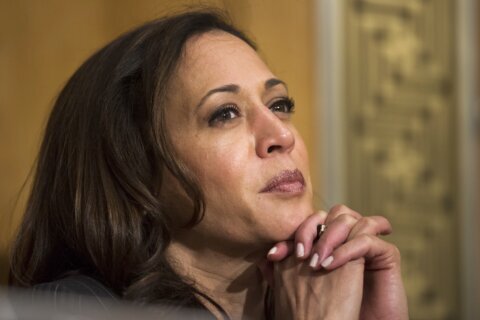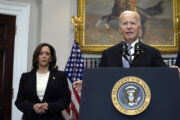Mortgage rates increased slightly this week, inching closer to 7% for the 30-year term. Fixed mortgage rates rose across the board, while adjustable mortgage rates decreased or stayed about the same.
Here are the current mortgage rates, without discount points unless otherwise noted, as of April 20:
— 30-year fixed: 6.95% (up from 6.92% a week ago).
— 20-year fixed: 6.88% (up from 6.8% a week ago).
— 15-year fixed: 6.24% (up from 6.14% a week ago).
— 10-year fixed: 6.37% (up from 6.28% a week ago).
— 5/1 ARM: 5.67% (up from 5.66% a week ago).
— 7/1 ARM: 5.94% (down from 6.2% a week ago).
— 10/1 ARM: 6.04% (down from 6.07% a week ago).
— 30-year jumbo loans: 7.06% (up from 7% a week ago).
— 30-year FHA loans: 6.08% with 0.06 point (up from 6% a week ago).
— VA purchase loans: 6.2% with 0.05 point (up from 6.16% a week ago).
[Read: Best Mortgage Lenders.]
“Mortgage rates are the product of the larger economic environment, including inflation and employment data as well as banking stability and the Fed’s actions. Recent data points to a still-resilient, though cooling economy, leading many to believe the Fed will elect to raise the target rate at next month’s meeting.”
— Hannah Jones, economic data analyst at Realtor.com
At its March meeting, the Federal Reserve increased its benchmark rate by 25 basis points, which was smaller than the 50 basis points previously anticipated due to high-profile bank failures earlier that month. The Federal Open Market Committee will meet again on May 2 and 3, when policymakers will decide whether to raise the federal funds rate again or pause its course of rate hikes.
Even with clear signs of price stabilization, the central bank is likely to continue hiking rates at the current pace, according to George Ratiu, chief economist at Keeping Current Matters. The March consumer price index report found that inflation continued rising 5% annually, which is the slowest pace in nearly two years but still well above the Fed’s 2% target rate.
“Inflation remains a concern, keeping the Federal Reserve in a hawkish position, poised to push the policy rate up by another 25 basis points at its May meeting,” Ratiu says.
In the meantime, the 30-year fixed mortgage rate will stay between 6% to 7%, Ratiu says, due to “monetary policy on a tightening path and price growth still gaining.” Homebuyers remain extremely sensitive to volatile mortgage rates, with mortgage application volume and home sales activity pulling back recently due to rising rates — even though we’re entering the typically busy spring homebuying season.
[Compare: Mortgage and Refinance Rates in Your Area.]
Indicator of the Week: One Year of the ‘New Normal’
In a moment of reflection, many economists are quick to point out a bleak anniversary. One year ago this week, mortgage rates reached 5% for the first time in over a decade. Since then, rates have surged above that 5% threshold, breaching the 6% mark this past August and surpassing 7% a couple of months later in October.
“Affordability continues as a headlining concern for many buyers, but at the same time, many are accepting today’s rates as the new normal,” Ratiu says.
Although some homebuyers may be adapting to the current rate environment, others remain unwilling to borrow a mortgage at a near-7% rate. That’s evidenced in last week’s existing-home sales report from the National Association of Realtors, which found that completed housing transactions were 22% lower in March 2023 than in March 2022, when rates were at 5%.
While last year’s homebuyers were spooked by 5% mortgage rates, today’s homebuyers would gladly jump at the opportunity to lock in a 5% rate. A new U.S. News survey found that 66% of buyers are waiting for mortgage rates to fall further before entering the market. Among them, 28% are waiting until rates fall below 6%, and 30% are waiting for them to drop below 5.5%.
In line with our survey, Freddie Mac Chief Economist Sam Khater says that demand will only “modestly recover” until rates drop into the mid-5% range. Rates are forecast to fall to mid-5% in 2023, but that won’t likely happen until the end of the year, at which point demand may be further out of step with supply.
Besides, mortgage affordability isn’t the only thing keeping buyers on the sidelines this spring. A lack of housing inventory has exacerbated difficult conditions for buyers who would otherwise be ready to re-enter the market. For-sale inventory improved modestly in March but remains well below pre-pandemic levels, according to Zillow data.
The low inventory of homes for sale is fueled in part by current homeowners, who are hesitant to sell their homes and trade in their sub-3% mortgage rate for a much higher one. Our survey also found that among those buying a home this year, 25% don’t plan on selling their current home in order to buy their next one. Of those homeowners who do plan to sell their home, 56% are worried they’ll regret letting go of their lower mortgage rate.
I don’t blame them. Mortgage rates will likely never dip below the record low of 2.65% set in January 2021, so it’s no wonder why many homeowners feel locked in by their low monthly payments.
[Calculate: Use Our Free Mortgage Calculator to Estimate Your Monthly Payments.]
More from U.S. News
Spring Mortgage Forecast: Rates Will Stay Above 6%
Two-Thirds of Homebuyers Are Holding Out for Lower Rates
Mortgage Rates Rise, Ending Monthlong Downward Slide
Mortgage Rates Inch Higher to Nearly 7% originally appeared on usnews.com







